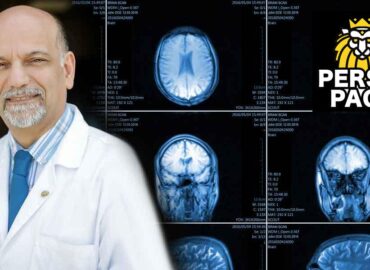
Dr Ramin Ansari | Frisco, TX
Dr Ramin Ansari
Dr Ramin Ansari | Persian Neurology Doctor in Frisco, TX
Dr Ansari comes to Lonestar Neurology from Temple University Hospital, in Philadelphia, PA where he worked as an assistant professor of neurology for two years. He completed a fellowship in clinical neurophysiology at Hahnemann University Hospital. Prior to this, he was a neurology resident at Temple University Hospital. He is an avid researcher with many publications, abstracts and presentations to his credit. (Iranian Doctor)
He has authored articles in such peer-reviewed journals as the Journal of Radiation Research and Proceedings of the National Academy of Sciences. While at Temple, he diagnosed and managed patients with epilepsy and stroke, as well as, neuromuscular disorders. He is a member of the American Academy of Neurology. Dr Ansari is moving to the metroplex to be closer to the family. He will maintain office hours at the Frisco and Mckinney locations and will be on staff at Centennial Medical Center and will serve patients in Frisco, McKinney, Little Elm and surrounding communities.
Neurologist Occupation Names Physician, Medical Practitioner Profession Activity sectors Medicine Description Education required MD or DO (US), M.B.B.S. (UK), M.B. B.Ch. B.A.O. (Republic of Ireland)[3][4] Fields of employment Hospitals, Clinics Polish neurologist Edward Flatau greatly influenced the developing field of neurology. He published a human brain atlas in 1894 and wrote a fundamental book on migraines in 1912. Jean-Martin Charcot is considered one of the fathers of neurology.[5] Many neurologists also have additional training or interest in one area of neurology, such as stroke, epilepsy, neuromuscular, sleep medicine, pain management, or movement disorders. In the United States and Canada, neurologists are physicians having completed postgraduate training in neurology after graduation from medical school. Neurologists complete, on average, about 8 years of medical college education and clinical training, which includes obtaining a four-year undergraduate degree, a medical degree (DO or MD), which comprises an additional four years of study, then complete one year of basic clinical training and four years of residency.[6] The four-year residency consists of one year of internal medicine internship training followed by three years of training in neurology. Some neurologists receive additional subspecialty training focusing on a particular area of the field. These training programs are called fellowships and are one to two years in duration. Subspecialties include brain injury medicine, clinical neurophysiology, epilepsy, hospice and palliative medicine, neurodevelopmental disabilities, neuromuscular medicine, pain medicine, sleep medicine, neurocritical care, vascular neurology (stroke),[7] behavioural neurology, child neurology, headache, multiple sclerosis, neuroimaging, neurorehabilitation. In Germany, a compulsory year of psychiatry must be done to complete a residency in neurology. In the United Kingdom and Ireland, neurology is a subspecialty of general (internal) medicine.






